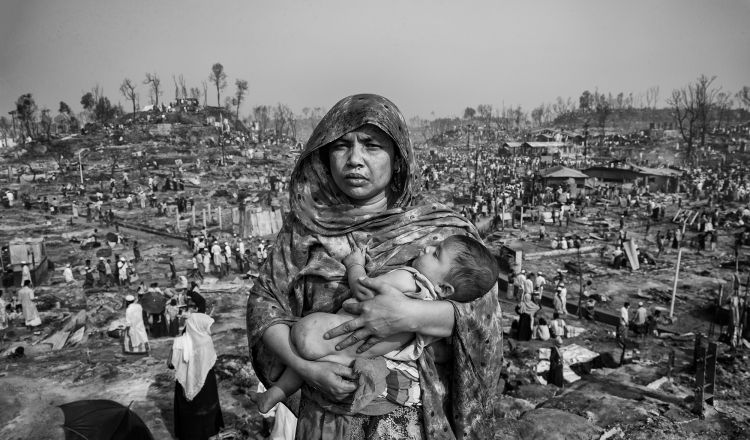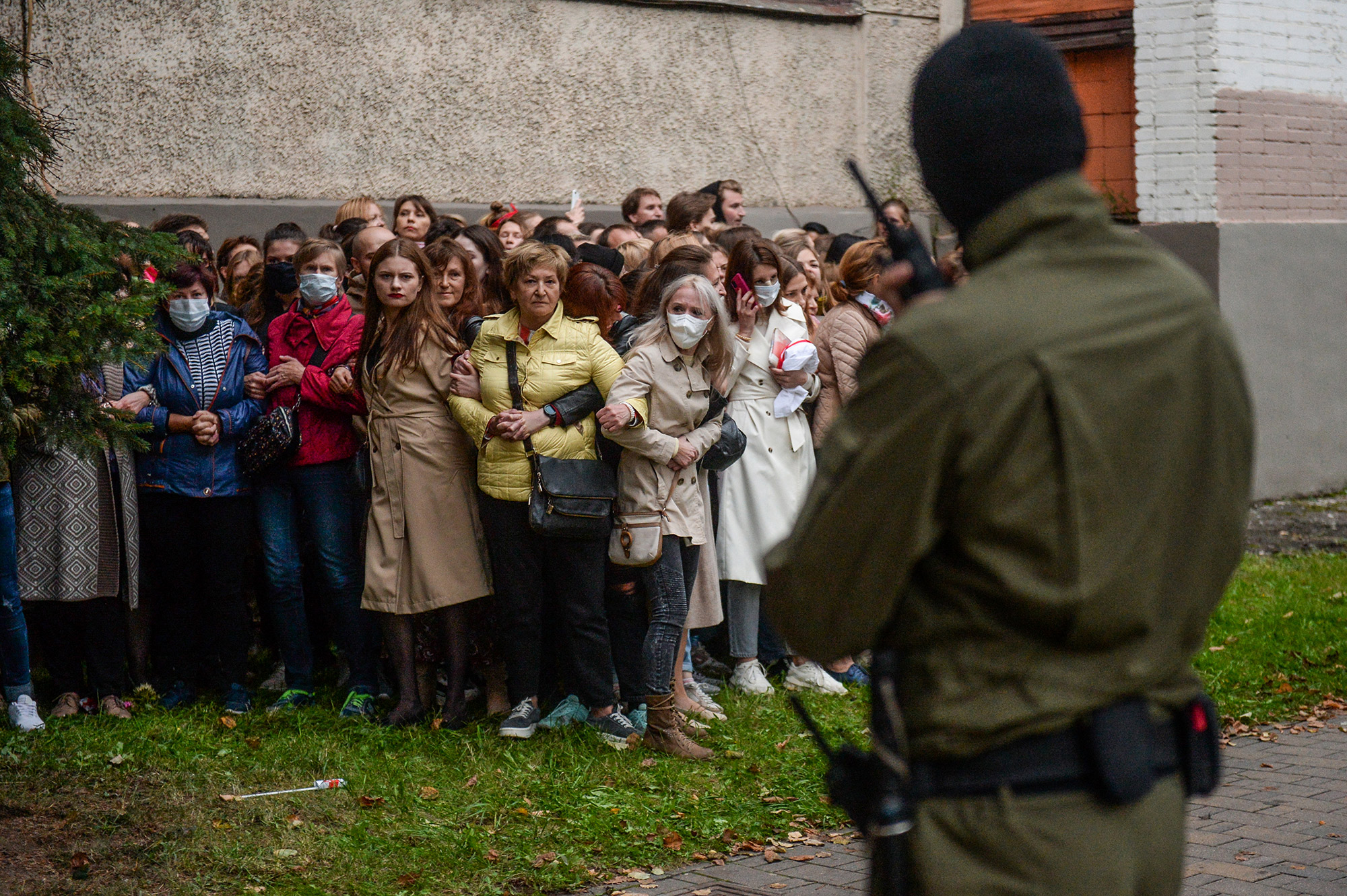Photography for Humanity
2021-12-10 09:05

Photography 4 Humanity (UN) is an international initiative that calls on photographers around the world to bring to life the power of human rights through their images. Highlighting the most compelling human rights imagery - illustrating courage, despair, hope, injustice, compassion in ways small and large, the images serve to inspire people to personally get involved and take a stand for human rights.
At the core of the Photography 4 Humanity initiative is a global call to action for amateur and professional photographers alike, to submit images for an annual competition where the top finalists each year have their photographs exhibited at the United Nations.
The exhibit is developed to highlight the top finalists of the Photography 4 Humanity Global Prize Competition and to inspire photographers to document the power of human rights around the world. It is created and organized by David Clark Cause (DCC) in collaboration and support of the Office of the High Commissioner for Human Rights (OHCHR) and Fotografiska New York.
Winning Image: Thirsty Earth , West Bengal, India (March, 2021), Women Searching for water because they do not have sufficient sources of water for daily use due to severe droughts. Photo: Apratim/Pal
STAY HOME
Novocheboksarsk, Russia

In 2020, humanity has been forced to live in new conditions. Civilization is intensively engendering a new normality. (November, 2020) Photo/Yuri Pritisk
GENDER DISCRIMINATION
Tehran, Iran

One of the biggest problems in our society is gender discrimination, which begins during childhood. "Why should we teach this to our children?" (September, 2020) Photo/Parichehr Zhian
HIGH HOPES
Mediterranean Sea

A group of rescuers try to save the victims of a shipwreck until the end. (November, 2020) Photo/Fabrizio Maffei
UNJUST
Dhaka, Bangladesh

A young man is hoping for some help, but the man inside the car is taking pictures without helping him. The photographer is trying to show that this type of behavior is injustice. (June, 2021) Photo/Mohammed Saiful Islam
TEN YEARS AFTER ACID ATTACK
Parand, Iran

Masoumeh Ataei, a victim of an acid attack, holds her portrait, taken before the attack. (March, 2021) Photo/Morteza Nikoubazl
ALL I WANT IS LOVE
Assam, India

Two transgender youths hold each other in a bond of love and friendship. Exposed to bigotry and prejudice, basic human rights are often withheld from transgender people. (March, 2021) Photo/Somenath Mukhopadhyay
ISOLATED AND CONNECTED
Jakarta, Indonesia

A health worker is having a video call with his family while using personal protective equipment in a break room. (January, 2021) Photo/Gerdie Hutomo
GOLDEN CHILD
Ghana

Ghana exported approximately US $10 billion in gold, while the majority of people working in small-scale illegal gold mining live on just US $2 per day, and child labour is mostly free. (September, 2020) Photo/Mariusz Smiejek
PROTEST HAS A WOMAN’S FACE
Minsk, Belarus

Belarus women resist attempts by the Police to detain them during the protest rally that was held on September 8, 2020, in support of opposition leader Maria Kolesnikova. (September, 2020) Photo/Yauhen Yerchak/EPA
HOMELESS
Cox’s Bazar, Bangladesh

A mother holds her baby after a huge fire swept through the Rohingya refugee camp, Cox’s Bazar, in Bangladesh. The UN has said that 15 people died and some 400 others are missing. 45,000 are displaced. (March, 2021) Photo/M. Yousuf Tushar
A NEW WORLD (NEW REALITY)
Lafia, Nigeria

A public school pupil wearing a covid face mask in her classroom. (July, 2021) Photo/Fatima Yusuf
AT HOME
Ankara, Turkey

The photographer and his grandmother spent a lot of time at home during quarantine. In this process, he tried to rediscover the light at home and in daily life. (May, 2021) Photo/Emre Cakmak
BELARUSIAN GHETTO
Minsk, Belarus

The slogan "Long Live Belarus" (Zhyve Belarus) became a symbol of the Belarusian opposition when mass protests began in the country, after results from the Presidential election were announced. (December, 2020) Photo/Alexandra Bozhok
BIRTHDAY
Yasuj, Iran

An earthquake-stricken family celebrates a birthday in a tent. (March, 2021) Photo/Eshagh Aghaeimansourabad
COVID-19 AND ITS IMPACT
Varanasi, India

A family member bows his head and sits completely broken at Harishchandra Crematorium. His loved one passed away of Covid-19 and the body can be seen wrapped. (January, 2021) Photo/Mohit Khetrapal
DEADLY FIRE AT ROHINGYA REFUGEE CAMP
Cox’s Bazar, Bangladesh

Rohingya refugees search for their belongings after a massive fire that tore through a sprawling refugee camp in southern Bangladesh. The fire killed at least 15 people and some 400 others are missing. (March, 2021) Photo/M. Yousuf Tushar
DEVI BORON
New Delhi, India

Married women, clad in traditional red bordered white sarees, wear covid face shields and blow conch shells to perform the ‘Devi Boron’, the last puja before immersion of the goddess Durga. (October, 2020) Photo/Sourav Karmakar
EMERGENCY NURSE
Naung Goe Village, Myanmar

An emergency nurse works to cure people who live in the village, where there is no clinic or hospital. (January, 2021) Photo/Pyae Phyo Aung Amarabo
FAMILY OUTING
Kolkata, India

After the lockdown of Covid-19 lifted, a family experiences the morning mist and a short outing in the heart of Kolkata, India. (January, 2021) Photo/Rajesh Dhar
GIRL SMILING IN THE COLOR OF THE SKY
Dashtak, Iran

The joy and smile of a girl in a remote village shine while living in her poor house. (March, 2021) Photo/Seyedmohammad Tabrizi
HUMAN AND PLASTIC
Dhaka, Bangladesh

Bangladesh is one of the top plastic polluted countries in the world. Approximately 3000 tons of plastic waste are thrown out per day. Most of it ends up in landfills and water causing serious threats to the environment. (December, 2020) Photo/Mithail Afrige Chowdhury
MASKED WOMEN
Sabzevar, Iran

Women in Iran are required to cover their bodies with a chador. With the spread of Covid-19, these limitations have been exacerbated by masking. The image shows hope that one day all women around the world will have equal rights. (September, 2020) Photo/Hadi Dehghanpour
SOS COLOMBIA
Bogotá, Colombia

#SOSCOLOMBIA was one of the most used hashtags to make visible the Human Rights violations that were committed by the Police during the nationwide protests in Colombia that began on April 28th. (April, 2021) Photo/Julia Maria Schmidt
SPORT AND FUN INSTEAD OF WAR AND FEAR
Idlib, Syria

In the Syrian village of Al-Jina near the city of Aleppo, Waseem Satot opened a karate school for children, where disabled and non-disabled girls and boys are taught together. (October, 2020) Photo/Mouneb Taim
WATER SHORTAGE
Seikhtein Village, Myanmar

Two children in a local village fetching drinking water between the rocks. (January, 2021) Photo/Aung Kyaw Zaw










